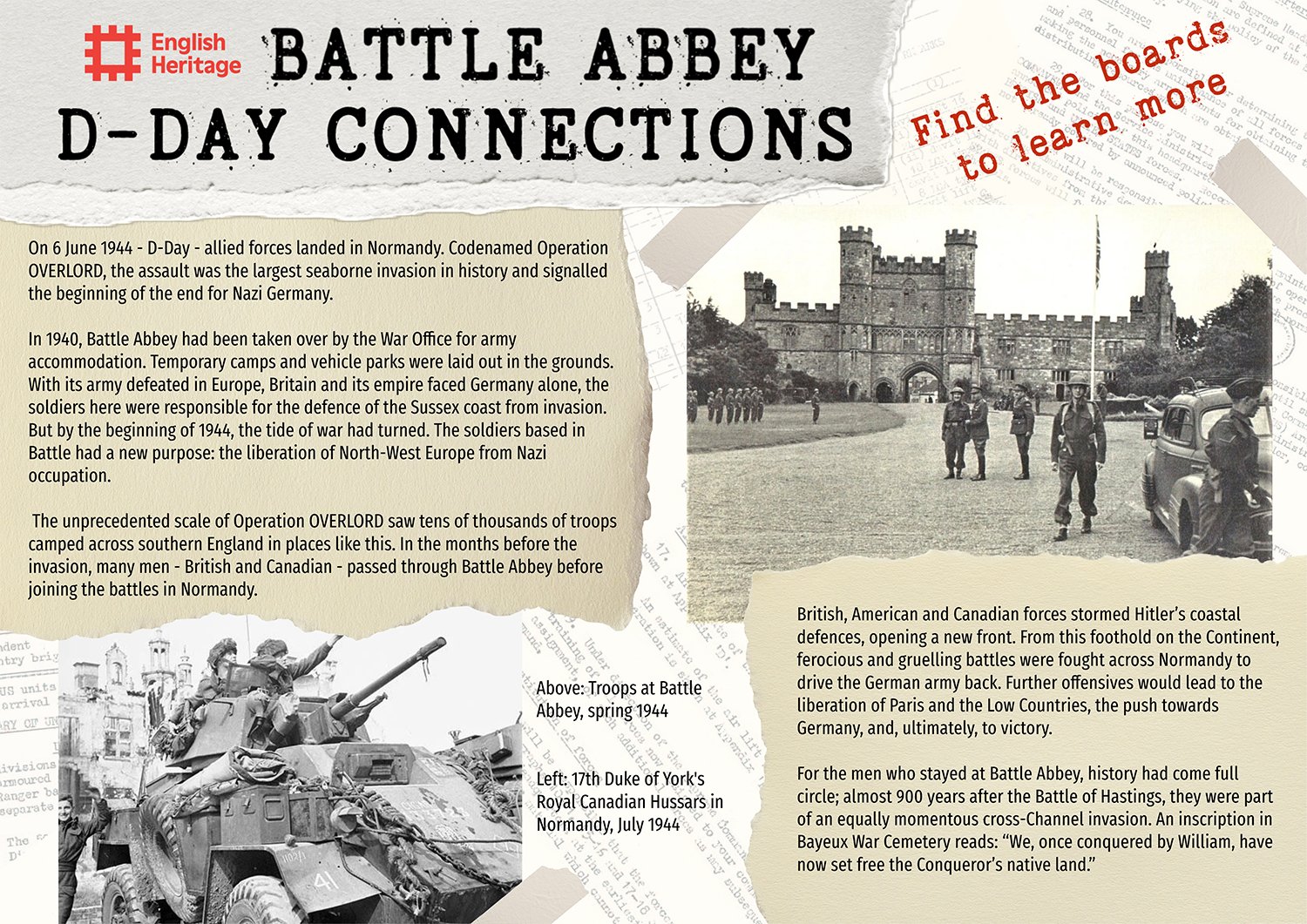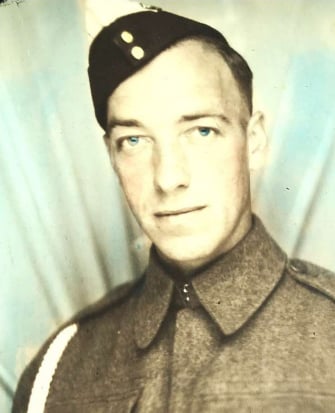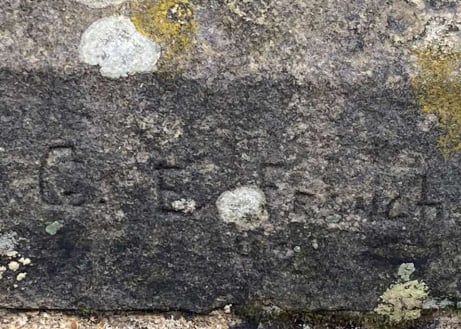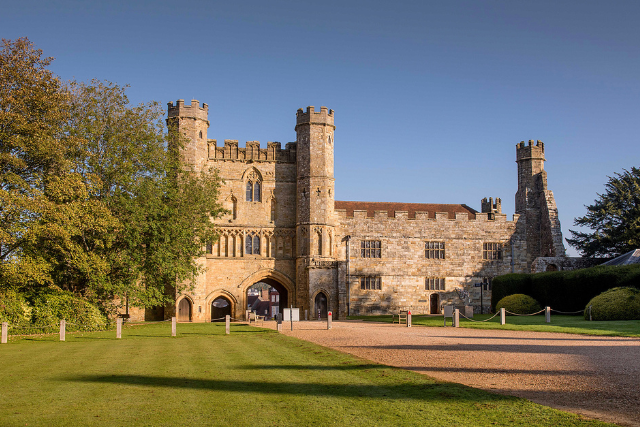05/06/2024
Battle Abbey's D Day Connections Remembered in a Poignant New Exhibition
- New research tells the stories of individuals who were stationed in Battle Abbey and took part in the Normandy landings
- 'D Day Connections' features across Battle Abbey and runs until Sunday 30 June
A name scrawled on the walls of the ancient Battle Abbey by a soldier who died on Christmas Day 1944; and a poem written by young soldier stationed there to a local girl weeks before he perished in Normandy.
These are just two of the stories of human heroism and sacrifice from a new English Heritage exhibition about Battle Abbey's connections with the D Day landings. This year, 2024, is the 80th anniversary of the D Day landings.
'D Day Connections' tells the stories of a handful of the thousands of men who passed through Battle Abbey, site of the 1066 Battle of Hastings, when it was used by the War Office during the Second World War. The site was part of a major south coast operation to train troops for the Battle of Normandy. The invasion, which began with the D Day landings on 6 June 1944, turned the tide of the Second World War in the Allies' favour.
While it was ultimately successful in liberating towns and cities in Western Europe from Nazi control, the Battle of Normandy campaign cost the Allied forces an estimated 45,000 lives.
Now a group of Battle Abbey's volunteers, determined to put a human face to the statistics, have spent months tracing clues, such as graffiti still visible on the walls, and liaising with regiments and military associations, to gain a glimpse into the lives of the men who spent time at the site before fighting in the Normandy campaign.

The new exhibition, which will be posted at strategic points across the famous ancient site, is a sombre collection of snapshots of individual courage and tragedy. They include:
- Sergeant George Elliott French, a Canadian soldier with the 7th Canadian Reconnaissance Regiment (17th Duke of York's Royal Canadian Hussars).

George was one of the many soldiers who carved their names in the ancient stonework, and his can still be seen today on the gatehouse parapet. George landed in Normandy just after the D Day landings and was involved in the bitter fight for Caen and the battles to capture the Channel ports. Tragically, he was killed in the Netherlands on Christmas Day 1944 by a Dutch resistance fighter who mistook him for a Nazi.

Battle Abbey volunteer, Tim Birch, who researched George's story said: 'One name has always stood out to me from the graffiti carved in the gatehouse: 'GE French'. Knowing that Canadian soldiers were stationed at Battle Abbey, I followed a hunch. My research soon revealed the record of his death and through contact with his regiment's association in Canada, his whole story was revealed.
'The process of discovery has been fascinating, but the excitement was tinged an increasing sadness as his tragic fate was uncovered. It is important to remember the tragedy of war and the bravery of those who gave up everything to try and make the world a better place for those they left behind.'
- Thomas Billings Anderson, a 19-year-old corporal with the Somerset Light Infantry.
During his time stationed at Battle, Thomas met local girl Velda Ford and was invited for tea at her home on what happened to be his 20th birthday.
As a thank you, Thomas inscribed a poem in a book belonging to Velda, which she has treasured to this day, and is highlighted in the exhibition. Two of the lines read,
'The fight is so useless, the struggle is wrong.
For when the curtain comes down, we take nothing along.'
Thomas died in July 1944 fighting in Normandy.
Battle Abbey volunteer Heather Badcock, who met with Velda, said, 'My research began when I met local people in the town of Battle who had stories about the Second World War. They were all so interesting, but Velda's story made it a very special project for me.
'It was so poignant to think that Thomas wrote those prophetic words just weeks before he died so young and that Velda has treasured his memory. She was so generous in sharing these with me.'
- Signalman Stanley Cyril Procter, from Carshalton in Surrey
Stanley used the Morse code skills he had learnt in the Boys Brigde to join the Royal Corps of Signals.
At the beginning of 1944, Stan was based at Battle Abbey, from where his division was driven to Tilbury Docks to make the crossing to Normandy. As they passed through towns en route, people came to the roadside to cheer them on their way. He remained with his Brigade throughout the campaign, with the highly dangerous job of relaying messages between commanders, often under fire.
After the war he went back to his job as a clerk and died peacefully in 1995.
Alongside the human portraits, the exhibition also displays pictures of troops as they prepared for D Day and of a visit from Winston Churchill in May 1944 who visited the troops at Battle Abbey and regaled them with details of the Battle of Hastings.

James Witcombe, site manager for Battle Abbey said: 'The site is, of course, best known for the men who fought in the Battle of Hastings in 1066. But we wanted to tell the much more recent story of the troops who literally followed in their footsteps. It's been an emotional experience to remember the young men who did not know while they were here with us that they only had a short time left to live and puts names and faces to the indelible traces they left here.
'It’s also fascinating to think that for the men who stayed at Battle Abbey, history had come full circle. Almost 900 years after that history-defining battle, they were part of an equally momentous cross-Channel invasion. An inscription in Bayeux War Cemetery, for example, reads: "We, once conquered by William, have now set free the Conqueror's native land".'
- D Day Connections at Battle Abbey runs at the site until Sunday 30 June and is included in the admission price. Book here.